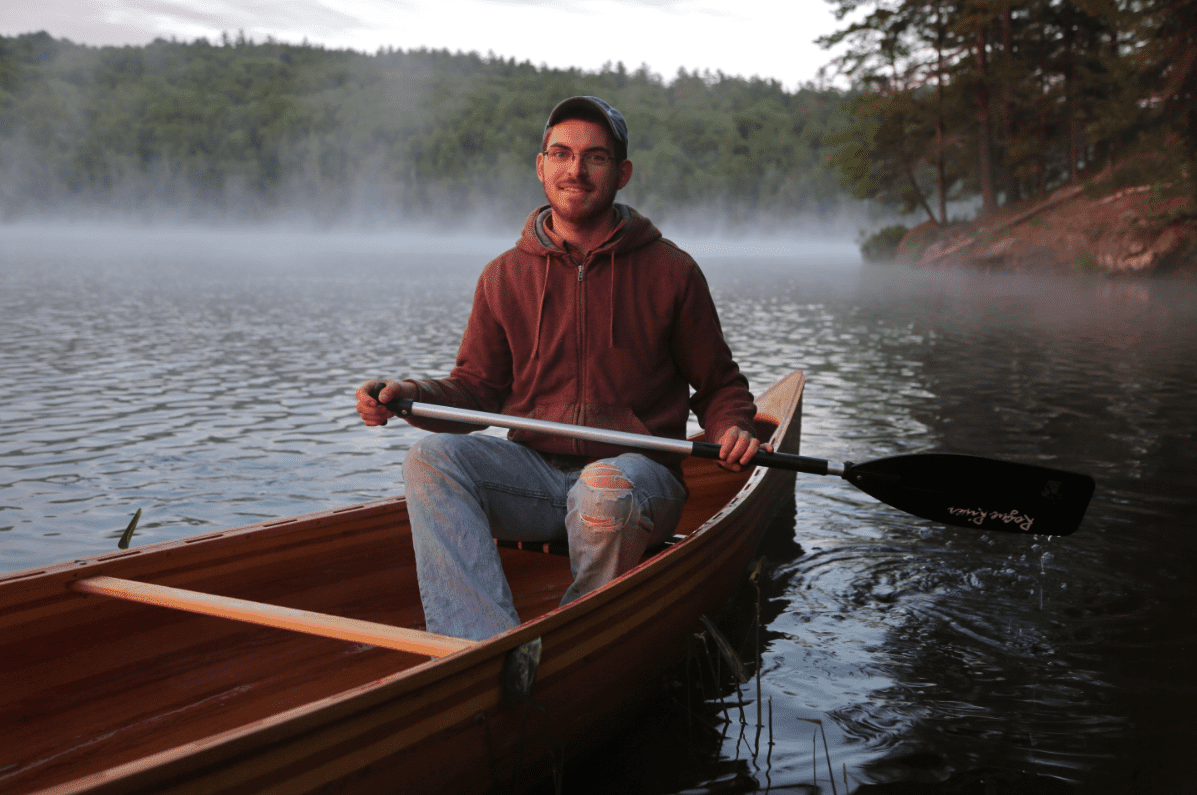Tyler had relied on oral and lip-reading communication for most of his life. As his hearing loss progressed from his toddler years through early adulthood, he felt that opportunities were limited for someone who didn’t quite have the confidence necessary to work with customers or coworkers on phone calls. Once hearing aids alone were no longer enough, cochlear implant technology turned Tyler’s confidence and life around.
“When I was a 3-year-old toddler, I was diagnosed with hearing loss with no known cause. My hearing loss was classified as moderate to severe, so at the age of 4, I was fitted with my first pair of analog hearing aids. Fast forward to age 11, I woke up while camping one morning and noticed my right hearing aid was no longer working. It turned out that I lost most of the remaining hearing in that ear overnight and, again, with no known cause. I went through middle and high school while deaf in one ear and severely impaired in the other. I continued through college the same way. While I have taken classes for it, I do not know sign language and over the years have relied on oral and lip-reading communication for the bulk of my life.
At age 23, just two months before my wedding, I woke up one morning, looked at my future wife and told her I thought I just lost the rest of my hearing. After a slew of doctor appointments, my suspicions were confirmed. My hearing was bad enough that hearing aids didn’t do much, and I could barely hear someone yelling behind me. It was then that the doctor told me I was a good candidate for cochlear implant surgery. While I knew of the cochlear implant for most of my life, I didn’t know specifics about it or how it worked, but I immediately said I was interested in the possibility.
Choosing Cochlear due to reliability
 Four months after losing my hearing, I had my first consultation at a local cochlear implant center in New York City. Five weeks later, in early December, I was slated for surgery. By that time, I had done a ton of research on the different brands of cochlear implants, the surgery and the rehabilitation process after the procedure. I chose the Cochlear brand over all others, mainly for their reliability. I knew they had a solid history in the field and during my research, felt that they were very confident with their product and had very little difficulties with it. Ultimately, my doctors and I decided the Cochlear™ Nucleus® 6 Sound Processor would be a great fit.
Four months after losing my hearing, I had my first consultation at a local cochlear implant center in New York City. Five weeks later, in early December, I was slated for surgery. By that time, I had done a ton of research on the different brands of cochlear implants, the surgery and the rehabilitation process after the procedure. I chose the Cochlear brand over all others, mainly for their reliability. I knew they had a solid history in the field and during my research, felt that they were very confident with their product and had very little difficulties with it. Ultimately, my doctors and I decided the Cochlear™ Nucleus® 6 Sound Processor would be a great fit.
My journey after the surgery was a tough one; my recovery took a little bit longer because I was having balance issues (which was known prior to surgery), and my activation was an incredible, but somewhat stressful experience due to an overwhelming new stream of noise. Over the next six months, and with a lot of work and determination, I was hearing more and better than I’d ever heard in my entire life.
I decided to have a second cochlear implant in my other ear for a bilateral experience and had the second surgery nine months after my first. My new way of life really hit home when two months later, my daughter was born, and I got to hear her cries for the first time. I am now 28 years old and currently wear the Kanso® Sound Processors, which I love. My speech discrimination and understanding of speech is nearly 95 percent in both ears. Prior to the surgeries, my best ear was 15 percent.
A new world of possibilities
Looking back, I realized that for most of my life, I thought I was going to be quite limited in my job opportunities because of my hearing loss. I had difficulties speaking with people I didn’t know, and I didn’t hear well at all in large group settings, noisy environments, understanding accents and well… the list goes on.
My education and work experiences are in fine furniture and woodworking, and I had planned on making it a career. The job required minimal customer interaction and was not in a large office setting, so it was perfect for me. I still have a business that I started a number of years ago making furniture and wooden boats and I’ve received numerous awards for my furniture and their designs. Though I still love making furniture, I operate my business more as a side gig today. After my surgeries, I realized that my confidence level was soaring because I was able to communicate so much better. That’s when I decided to make a radical change.
My new job opportunity
 Currently, I am employed at a building material supply company and work in customer service. That’s right… customer service. I never in a million years thought I’d be able to hear well enough and be confident enough with my hearing to work in a customer service related environment. When I am not on the road traveling to customers’ homes to fix windows and doors and interact with people I don’t know, I am in my large office using the telephone on a regular basis to correspond with co-workers and customers.
Currently, I am employed at a building material supply company and work in customer service. That’s right… customer service. I never in a million years thought I’d be able to hear well enough and be confident enough with my hearing to work in a customer service related environment. When I am not on the road traveling to customers’ homes to fix windows and doors and interact with people I don’t know, I am in my large office using the telephone on a regular basis to correspond with co-workers and customers.
The phone was something that always intimidated me, but now, with the help of the True Wireless™ Phone Clip, I talk on the phone daily. I also use the Phone Clip to listen to podcasts, audiobooks and music with ease as I commute every day. These are all things I couldn’t do before and now I love them. I frequently hear positive feedback from customers regarding the level of customer service I have provided them, and I know this is a direct reflection of my confidence being boosted. While I haven’t decided whether to get back to my passion in woodworking or grow in the company I’m in now, I suspect that my cochlear implants will allow me to become a good leader and manager moving forward, whatever my profession may be.
Thanks to the cochlear implants, my life has dramatically improved over the years and I am forever grateful that I went deaf at a time when technology was booming. It’s not just hearing that it changes, it is everyday life. I feel more confident in my career, my relationships with family and friends are stronger, and I’ve learned that carrying on a conversation with my 3-year-old daughter is one of the best feelings yet.”
If Tyler’s story inspired you to see if cochlear implants can open up more opportunities in your life, click here to learn more.